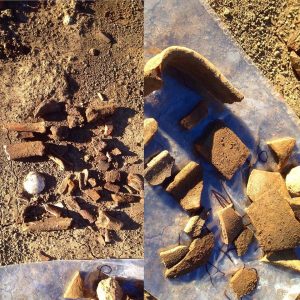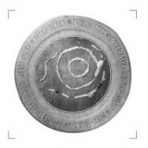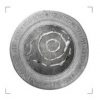The first season of archaeological excavation on Carlappiano (Piombino) has allowed us to acquire important information about the morphology of this unique place, originally placed in close proximity to the internal salted lake of Piombino, near San Martino’s mouth. In this point the aerial photos show the convergence of multiple signs of ancient riverbeds, related to the ancient course of the nearby Corniaccia river. The river beds draw an intricate geometry, of the center of which lies the place selected for our archaeological in-depth.
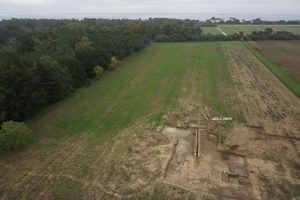
Prior to the dig, diagnostic activities were conducted on the site (magnetometry and pXRF), as well as a detailed archaeological survey, aiming to collect the various materials visible on the ground.
The excavations areas have selected some of the key points identified by the diagnostic activities. The presence of riverbeds, in some cases very deep, has been confirmed by the dig; in addition, the discovery of brick fragments and animal bones testifies the human presence and use of the canals /ditches (Area 1000).
These last meander in a complex landscape, in which dunes alternate to moist areas, where thick layers of clays accumulated. On the ancient dry areas (the dune) the excavation has revealed remains of walls and drainage works; a long channel oriented N/S was heading from the dune to the coast (Area 2000) (Fig.1); part of the perimeter of a possible house has been identified on the higher bit of the dune (Area 3000) (Fig.2).
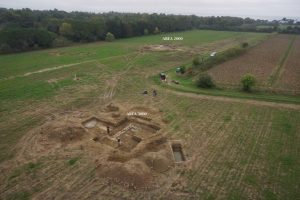
The pottery sherds and all the other finds place the majority of these human activities in the 12th and 13th century, when the Carlappiano area was under the control of Pisa. At the moment the presence of numerous earlier pottery productions (7th-11th century) found in secondary lying, couldn’t be related to the stratigraphic sequence; the earlier archaeological evidence could be easily located in other parts of the wide perimeter drawn by the ditches, which extends for about 4 hectares (Fig.3).
